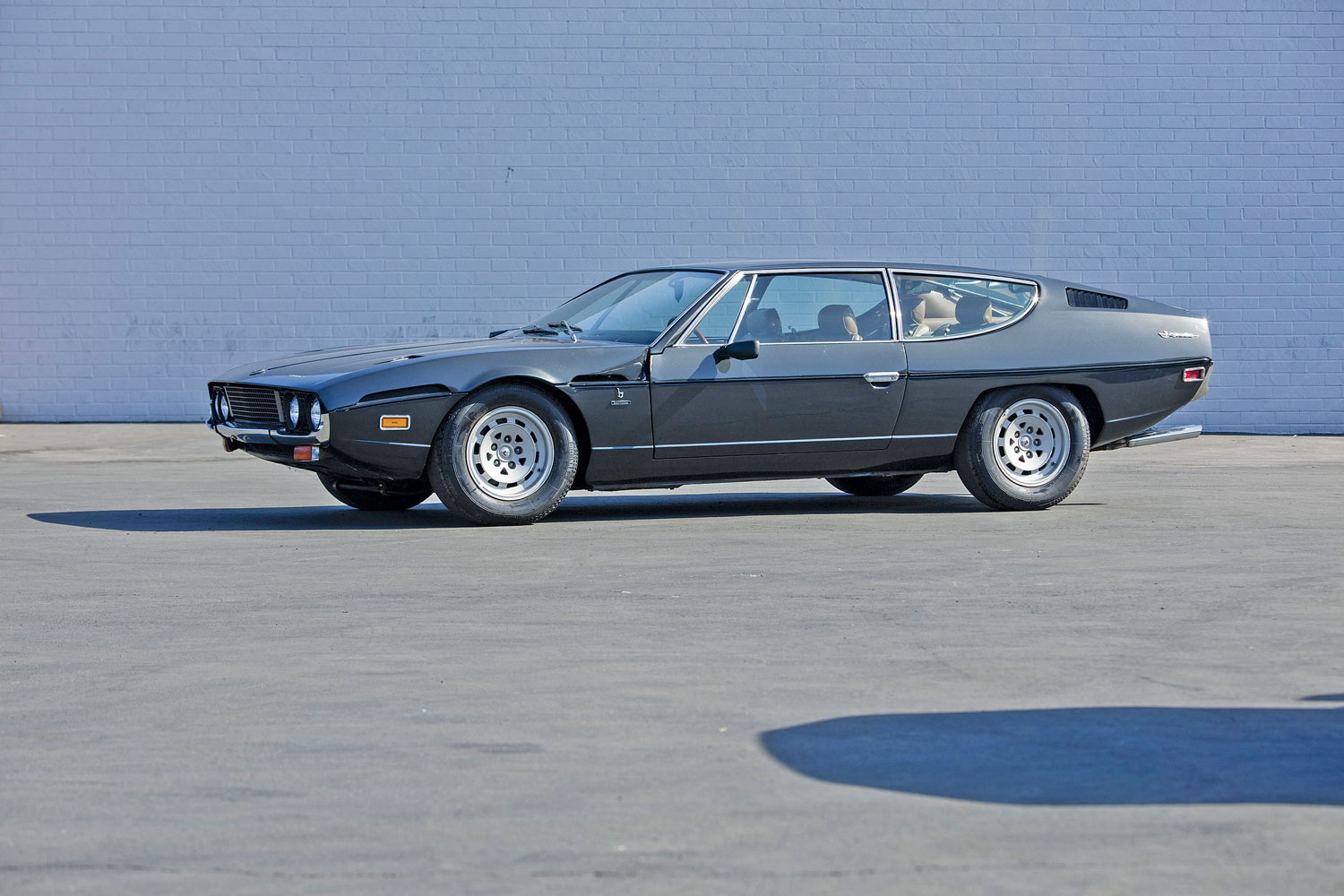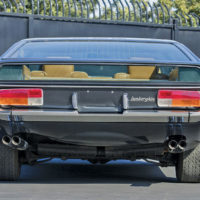SCM Analysis
Detailing
| Vehicle: | 1973 Lamborghini Espada Series III |
| Years Produced: | 1968–78 (Series III 1972–78) |
| Number Produced: | 472 (Series III) |
| SCM Valuation: | $137,000 |
| Tune Up Cost: | $2,500 |
| Chassis Number Location: | Stamped on the right side of the crossbeam in the engine compartment, plate on the front right wheelarch (inclusive of engine number) |
| Engine Number Location: | Stamped on the rear part of the engine between the V |
| Club Info: | Lamborghini Club of America |
| Website: | http:/www.lamborghiniclubamerica.com |
| Alternatives: | 1969–75 Maserati Indy, 1972–76 Ferrari 365 GT4 2+2, 1963–70 Iso Rivolta |
| Investment Grade: | C |
This car, Lot 156, sold for $85,120, including buyer’s premium, at Bonhams’ Greenwich, CT, sale on June 5, 2022.
The Espada was styled by Carrozzeria Bertone’s Marcello Gandini, with a result that is one of the most-debated car shapes in history. You cannot remain indifferent; you love it or you hate it. Putting aside personal taste, the Espada shape is something spectacular and just as smart and capable as it is of welcoming four adults. This is not a mere 2+2, as it has a wide rear space and decent comfort. The car can even accommodate two suitcases plus several soft bags in its luggage compartment, which is easily accessed through its rear hatchback glass.
We don’t, however, measure a Lamborghini by its trunk capacity. The Espada is amazingly fast. When I use the word “amazingly,” I’m not exaggerating, as Lamborghini test driver Valentino Balboni was known to have said that more often than not, a normal journey could be completed faster in an Espada than a Miura. The Espada uses the same 60-degree V12, mounted longitudinally in the front and capable of 370 hp, more than enough to put your driving license in jeopardy.
Three swords
Three series of Espada were produced from 1968 to 1978, and for a long time afterwards it ranked as the highest-volume Lamborghini, with 1,226 units built. The Series I cars (176 total) were manufactured from 1968 to 1970. These are the purest in design and featured a lot of hexagon-shaped details; today they are the most valuable. From 1970 to 1972, the Series II (578 cars) was an evolution that still included many of the same details, including Miura rims. The Series III (472 cars), from 1972 to 1978, was more refined and well equipped, with power steering and air conditioning, but these are usually the least valuable.
Our subject car is an original American car, coming from a decade-long ownership. It wears a color change to a basic black instead of the original and wonderful bronze-brown shade of Luci del Bosco, one that would perfectly fit the Espada’s flat surfaces. There is some visible damage on the left side of the bonnet and door, but nothing too difficult for a good body shop to fix. The interior seems original, and in good shape.
The car has its original engine, and while the Lamborghini V12 needs to be cared for by an expert, it is bulletproof if well-kept and correctly tuned. Trying to get by with maintenance on the cheap can be a killer, as can work by a mechanic who has the idea that he can “make it better.” The Espada was engineered by Giampaolo Dallara and Paolo Stanzani, and few have been capable of improving on their work.
At the Espada-Islero 50th Anniversary tour in 2018, there were about 20 cars present. These included several that had been happily driven 2,000 km (and then back) from the U.K. and Norway. During the 500 miles of the tour through the mountains of central Italy, only one car suffered from overheating, and it had a tired engine that was already planned to be rebuilt. The one other technical issue was a blown fuse.
The engine bay of our subject car looks good, still complete with the original heat pad that covers the inside of the hood. This indicates that the car has lived a decent life, without engine leaks or overheating. There is no visible rust, a common problem on the Espada. The respray looks to be too old to be covering rust bubbles, as at this point they would have already popped out again.
Imperfect but fixable
To my eyes, this was a good deal, as a nice Espada today sells for around $140k. Keep in mind that for whatever reason, the best examples of these cars seldom get sold at auctions but are traded privately. Regardless, the new owner of our subject car should have the necessary $50k margin to fix what is wrong.
With the Espada (and Lamborghinis in general), it’s always worth suffering at the beginning, paying the big and important service bills to have the car reliable and running well. Afterwards, you will save money by just needing routine maintenance while enjoying a wonderful car. The opposite approach doesn’t work, as a neglected Lambo will most likely let you down and cost more money in the long run with repeated repairs. When you see an Espada with needs being traded every few years and always in the same woeful condition — not unusual for auction frequent fliers — this is often exactly the case.
With the disappearance of the pure internal-combustion V12 in the near future, when the last Aventador Ultimae leaves the production line, everything made in Sant’Agata Bolognese using the classic V12 should go up in value. The new owner of this Espada has some work ahead of him, but the car was well bought. ♦
(Introductory description courtesy of Bonhams.)





